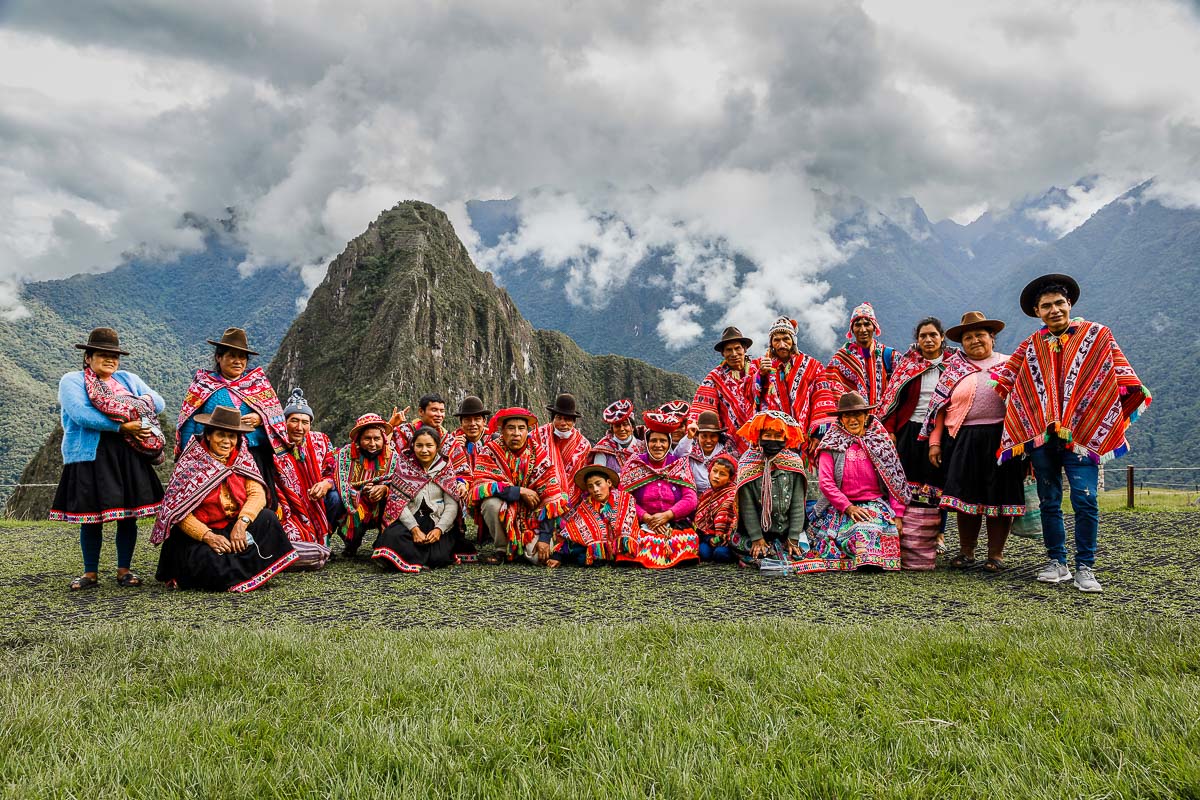
A commemorative group photo with some of the Quechua families while they wait for their individual groups to tour Machu Picchu.
Every year over 1.5 million people visit Peru’s Machu Picchu. This gem of the Inca Empire attracts tourists from around the world who endure a long hike to view the 15th-century citadel in all its glory. Local porters are a critical part of Machu Picchu’s tourism, as they carry supplies and break down camp for tourists as they make their way along the Inca Trail. But, as travel photographer Susan Portnoy discovered, these porters rarely—if ever—visit Machu Picchu themselves.
Most porters are indigenous Quechua people. Primarily farmers, they work seasonally as porters in order to supplement their income. During a recent off-season, the Quechua owner of an Inca Trail tour company decided to treat 65 porters to their own vacation to Machu Picchu. Here, roles would be reversed. Guides would act as porters, while the porters would get to experience the road to Machu Picchu as a tourist.
It was a moving experience that was, luckily, documented by Portnoy who was along for the ride. She was able to see with her own eyes what it meant for generations of Quechua to see their ancestral land and to experience the taste of luxury that they usually provide to others.
We had the chance to speak with Portnoy about her experience getting to know the Machu Picchu porters and what it was like to share this experience with them. Read on for My Modern Met’s exclusive interview.
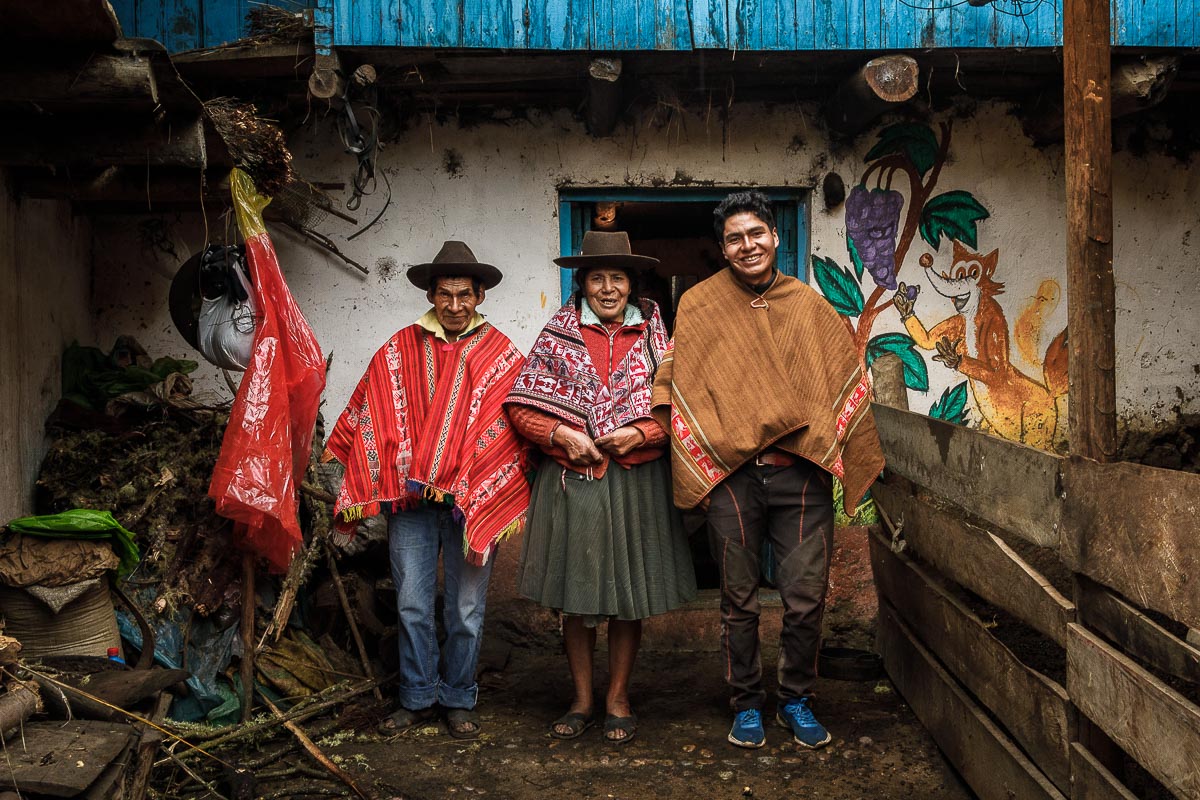
Martin and Maria and their son Beto, an Alpaca Expeditions porter, in front of their home in Choquecancha.
How did you first stumble upon this story?
As a freelance travel photographer and writer, I’m always talking to people in tourism, looking for interesting stories. I spoke in mid-February with Raul Colque, a Quechua owner of Alpaca Expeditions, a Peruvian outfitter who leads treks on the Inca Trail. The trail is closed for maintenance in February, giving everyone a little downtime. Raul mentioned that he had something special planned for the last weekend of the month. He was sending a group of the company’s Quechua porters and their families (65 people) on a two-day adventure to the Sacred Valley and Machu Picchu. None of them had been before. I asked if I could tag along.
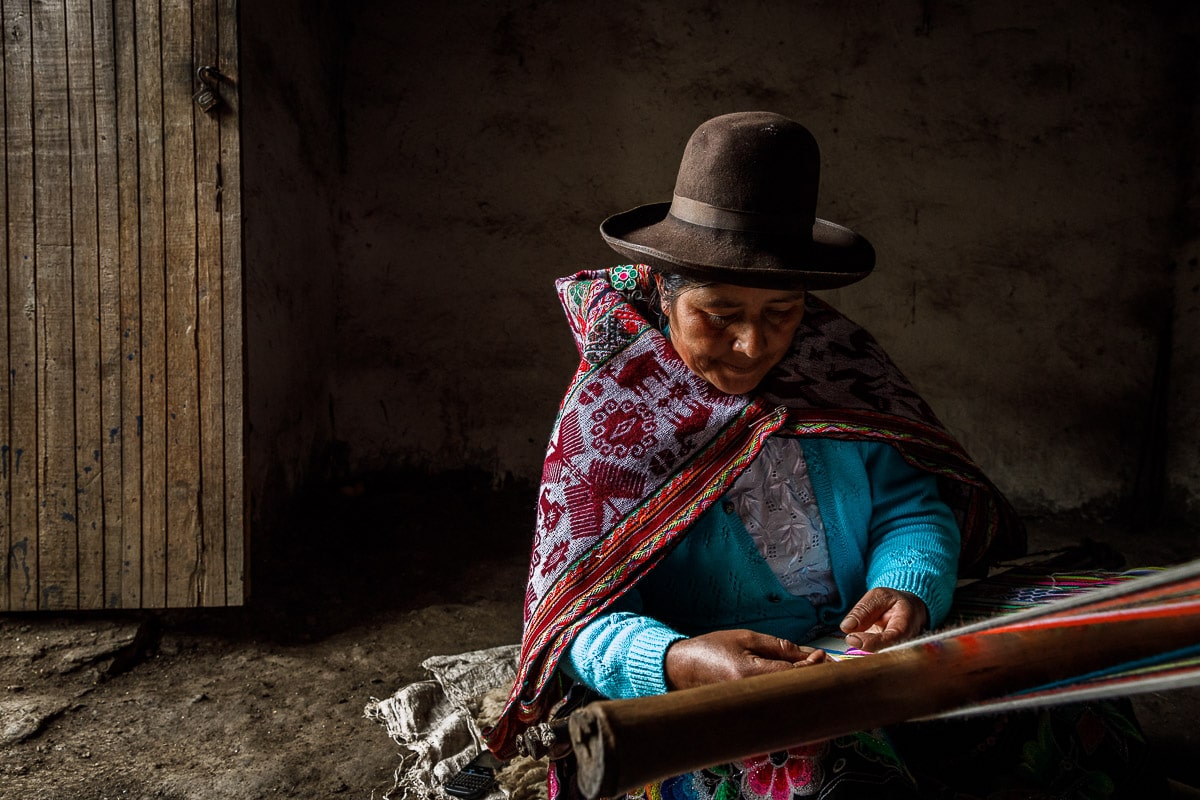
Victoria Wilka hand weaves a blanket to sell in the cellar of her home in Choquecancha.
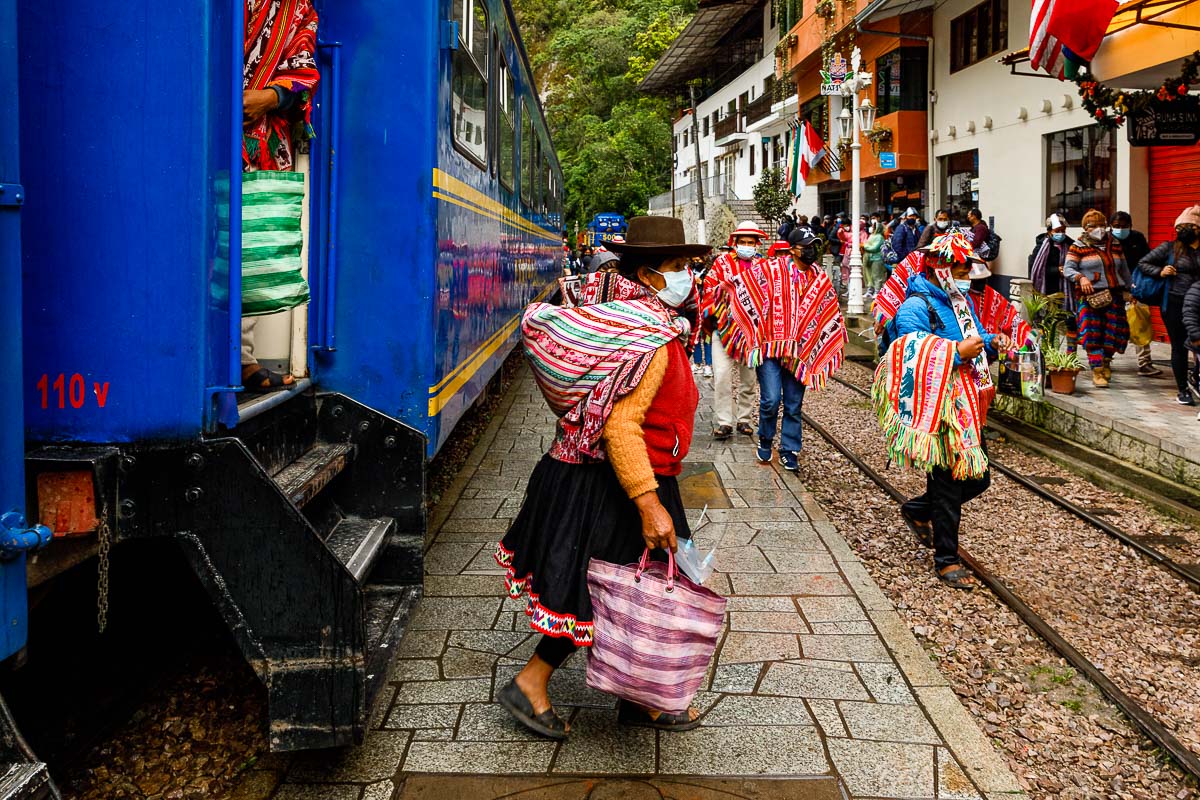
Maria steps down from the train in Aguas Calientes, where she’ll take the bus to Machu Picchu.
What inspired the trip?
Raul is a former porter and knows what it takes to do what they do. “They have the hardest jobs on a trek,” he told me. Sending them on holiday is a thank you for those efforts. Moreover, Raul wants the group to learn more about their ancestry. The Quechua are direct descendants of the Incas, but according to Pamela Rivas, one of my guides, history is barely on school curriculums.
Even if it were, education in the rural Andes is challenging. Schools are not in every mountain village, forcing students to walk two to three hours each way for classes. As a result, attendance is spotty. Lastly, the Quechua rarely—if ever—spend money on vacations. They are predominantly farmers who live in small rural villages high in the Andes. Sadly, they cannot survive on farming alone anymore. Thus, many families have members who work as porters to supplement their incomes. Raul’s trip allows them to be tourists for once.
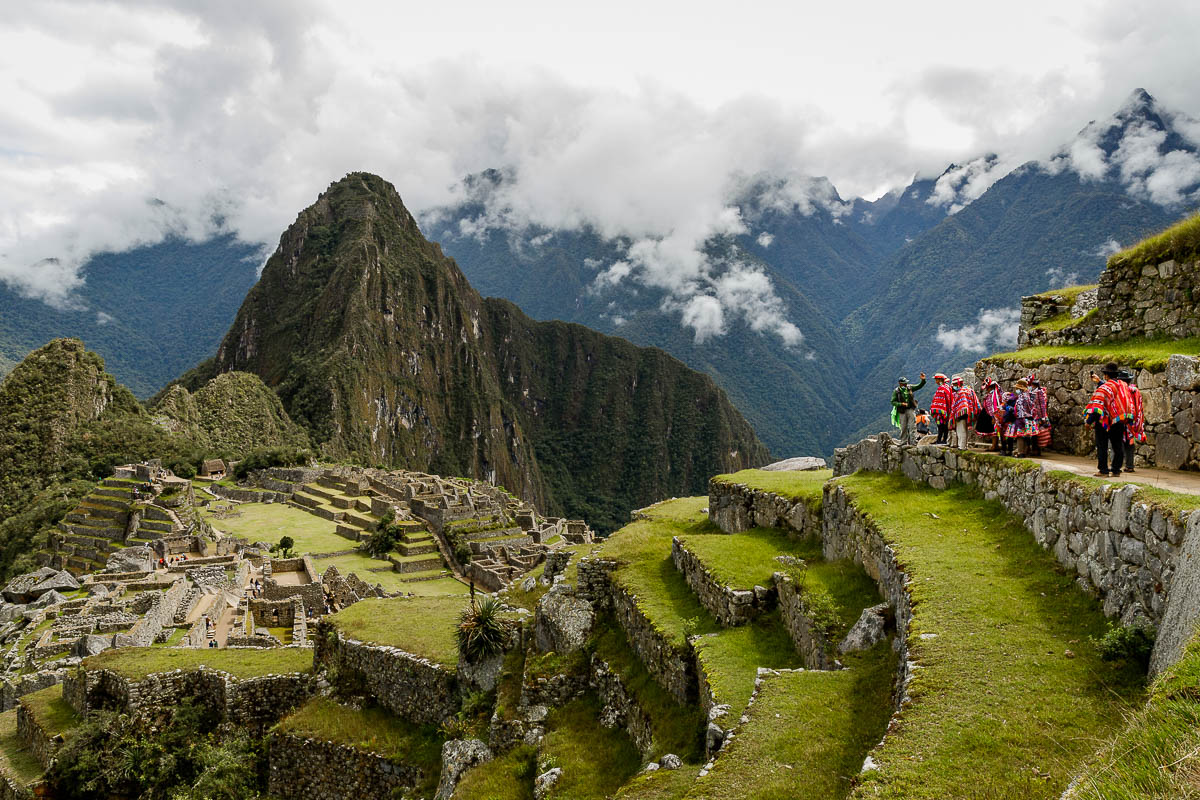
Elsa, her daughter Rosita (13), and her son Christian (9) check out one of the buildings while listening to their guide.
For those who may not know, can you explain a bit about the role of porters versus guides?
Porters are the backbone of a trek. Every day, they set up and break down the camp. They carry all the gear because pack animals are not allowed on the Inca Trail. Their packs average 50 pounds a person.
Imagine carrying that much weight while hiking up thousands of steps for 26 miles to Machu Picchu.
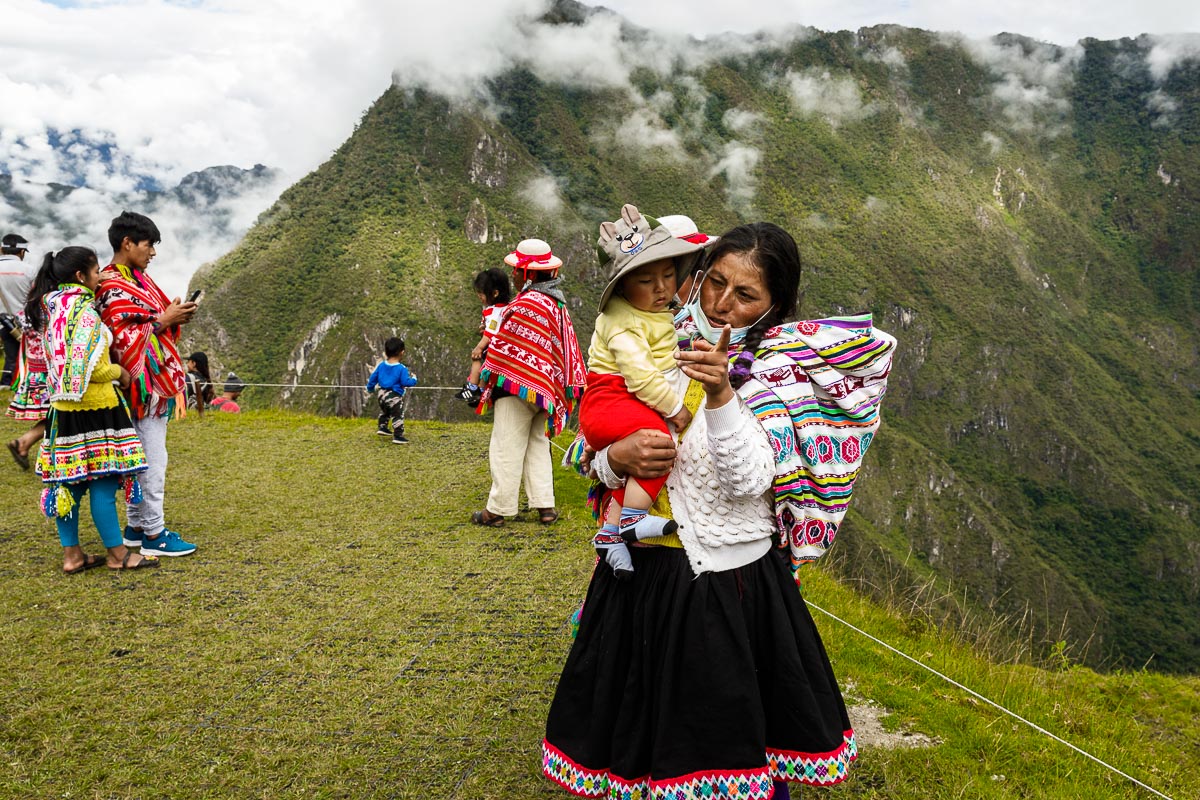
A Quechua mother tells her son to smile for a photo at Machu Picchu.

Rosita Benacur (13), takes a photo of Machu Picchu.
What was the most surprising thing you learned on this journey?
There were a few. One surprise was learning that porters may work the Inca Trail for years and never see Machu Picchu. I naively thought it was a given. In actuality, porters return to their home base in Ollantaytambo before their guests pass through the Sun Gate to the Lost City. The parks allow a fixed number of visitors daily, and the priority is paying tourists. The porters don’t visit on their own either. Even though residents can purchase discounted tickets, one adult entry costs more than most porters make in a day.
My other guide, Rossell Calderon, and my translator let me in on a little secret. The porters watch “gringos” (a catchall phrase for foreign guests) really struggle to hike the Inca Trail. Between the path’s difficulty and the altitude, it is not for the faint of heart. Having never seen the ruins, the porters couldn’t imagine what was so great about Machu Picchu that people would pay so much to suffer.

Pauline and other Quechua families take a cocoa leaf break on a plateau above Machu Picchu near the “care-takers” hut.
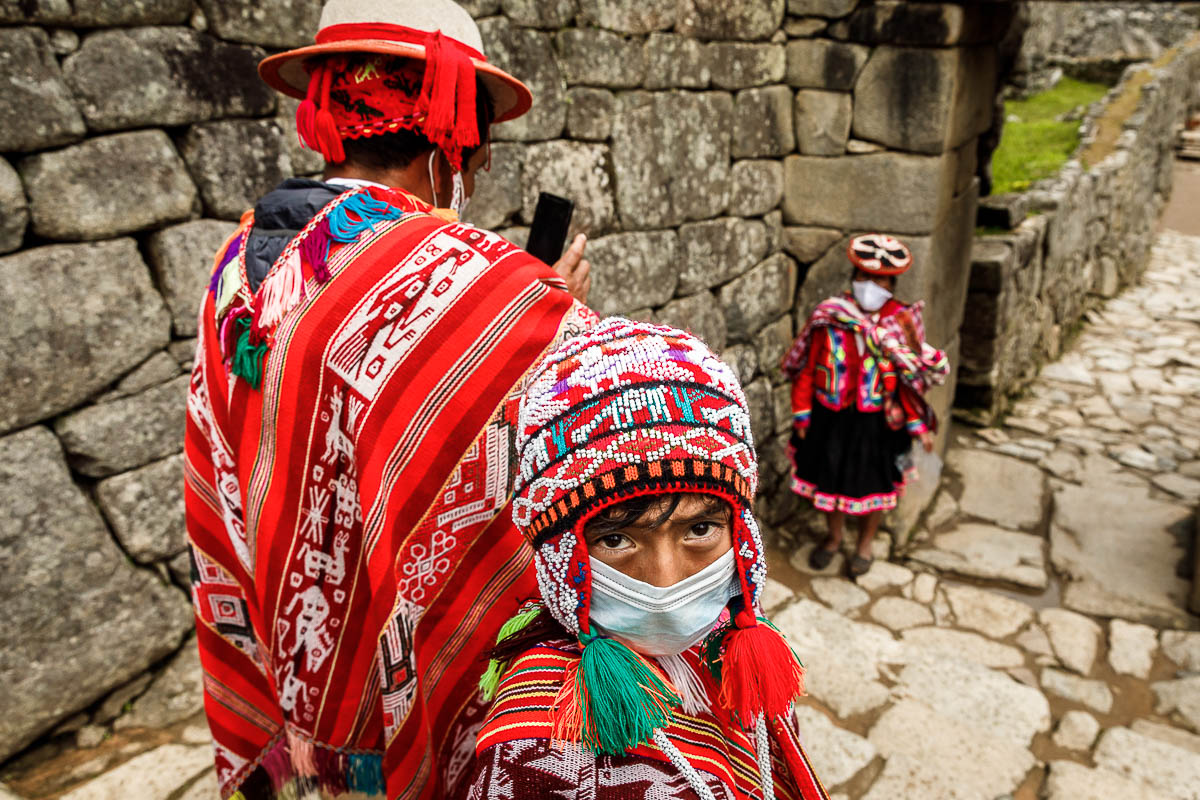
Machu Picchu awaits the Quechua.
Are there any special moments that stand out that you’d like to share?
As I mentioned, porters support the guides on a trek. On this journey, roles flipped. The guides took care of the porters. They handled the logistics, served them food, and helped them along the way. It was so sweet. And during the tours, the guides seemed to be extra expressive storytellers. It was clear they wanted the families to have a great time.
Another moment took place a few days before we started for Machu Picchu. I wanted to meet as many people before the adventure so they could get comfortable with me hanging around taking pictures. I went to two villages where many of the families lived. I was camping in a schoolyard in Choquecancha.
One morning, around 6:00 AM, Elsa, the wife of Gregorio Betancur (the village’s head porter), and her best friend, Pauline, surprised me with a visit. As a welcome gesture, they brought traditional handmade garments for me to wear—a beautiful woolen skirt, a blanket for my shoulders, and a hat. Unfortunately, I towered above both ladies, and the pieces were too small for me, but we had a lot of fun playing dress-up and giggling like kids.

Elsa Betancur, right, and a friend with her son walk up the ancient steps of the temple in Ollantaytambo.
What was your impression of how the porters viewed Machu Picchu when they finally got to enjoy it?
They reacted similarly to most of the visitors at first. They were awestruck as they drank in the scope of the ruins, then a flurry of family photos and selfies ensued. I sensed a growing appreciation for the city and its history the more we toured the ruins. The more we saw, the more questions they asked.
Several people told that me seeing their ancestral grounds with their families and as a community—some households had three generations present—was what they loved most.
Rosita (13) and Christian (9), Elsa’s children, went out of their way to tell me how proud they were of their father for helping people from all over the world see such an important place.
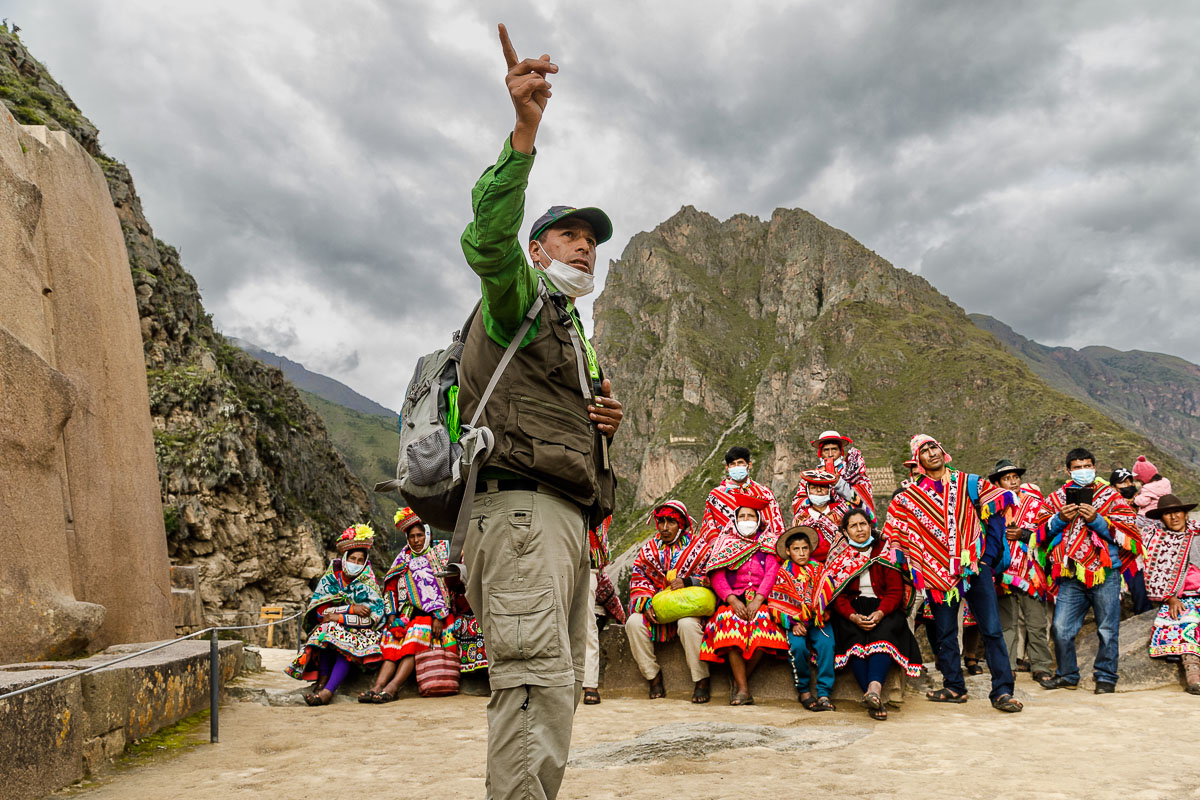
Quechua families listening to their guide Ruben Covarrubias explain the complexity of the stonework at Ollantaytambo.
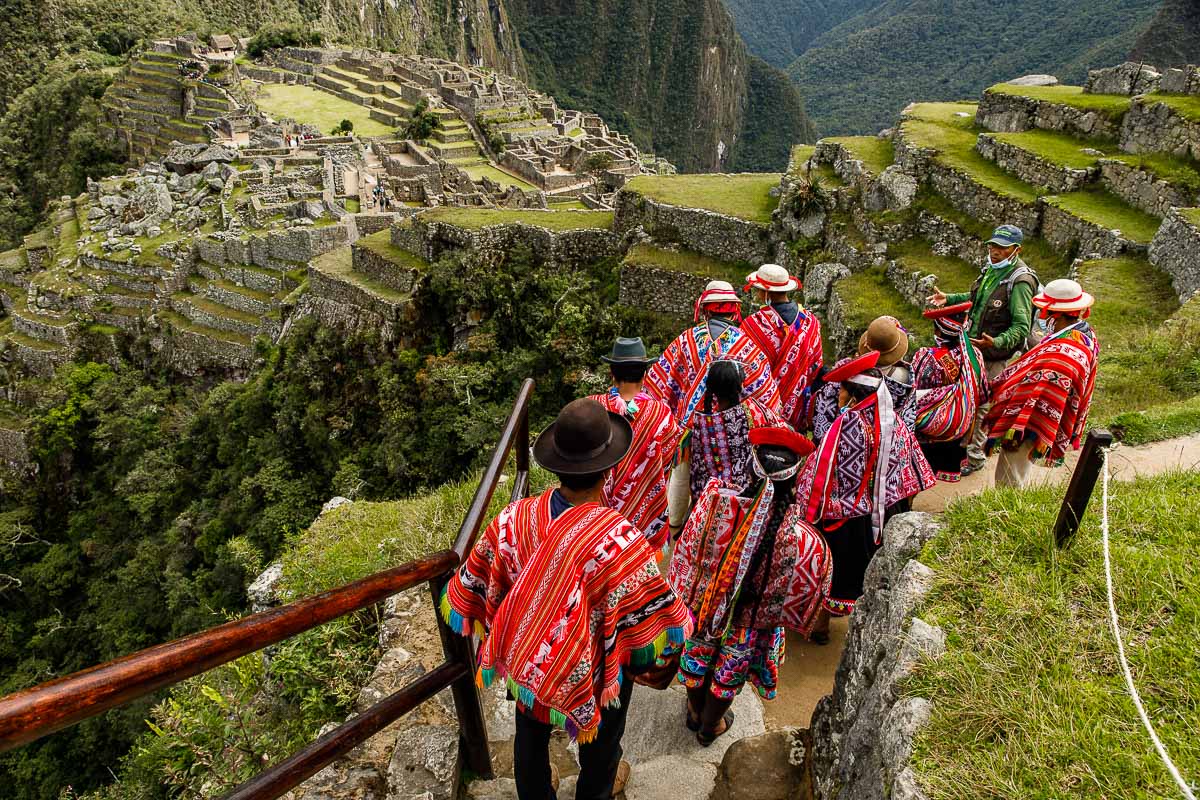
A small group of Quechua, led by guide Ruben Covarrubias begin their descent into Machu Picchu.
What was the most rewarding part of the experience?
Everyone was polite and kind when I first met the families, but also fairly reserved. Rossel explained they were shy; visits to their villages were uncommon. I wanted to put them at ease, knowing that my inclusion in their holiday was a gift. Fast forward four days later, they’d taken me under their wings. When it was time to say goodbye, every single person hugged me. My heart exploded. I was so touched.
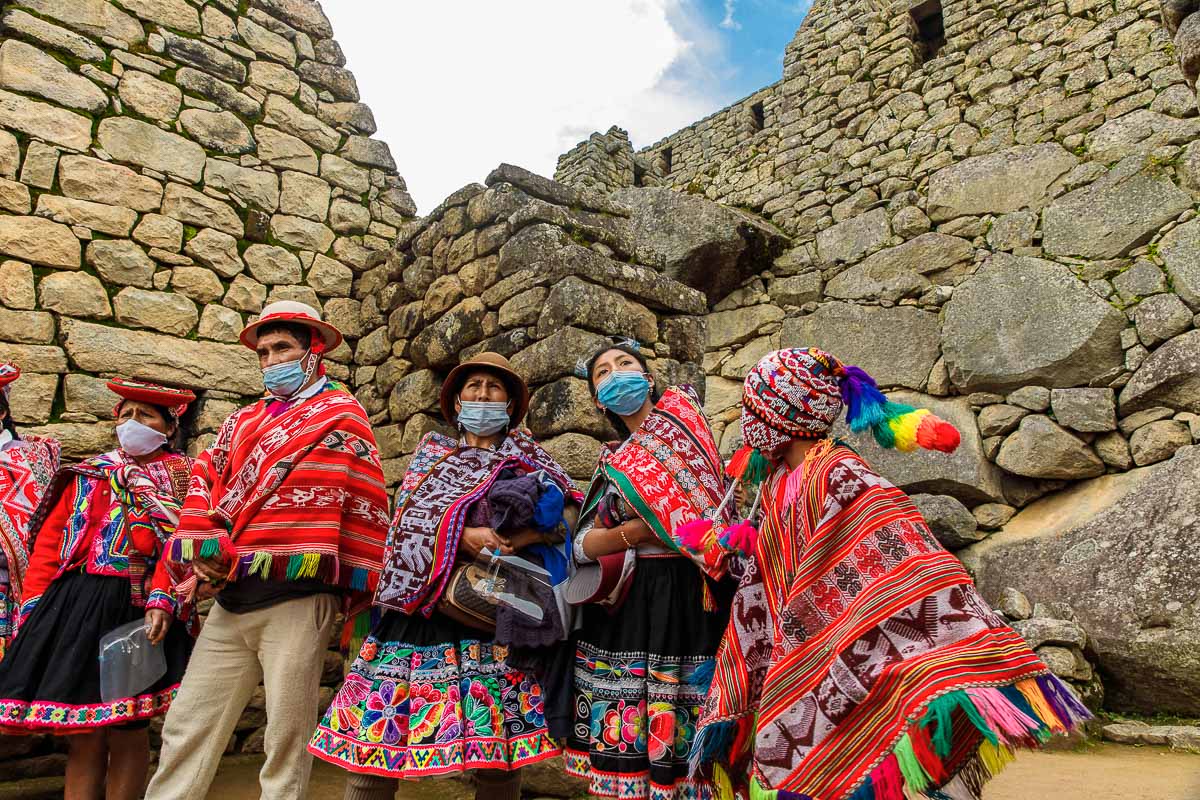
A boy and his parents taking photos at the main entrance to Machu Picchu.
What do you hope that people take away from this story?
When traveling, I hope they take the time to explore beyond the touristy spots and do so thoughtfully. “To know the real Peru, you can’t go to the cities. You have to go to the small villages,” Pamela said. I think that’s true for nearly every destination. But it’s important to remember that they’re guests in someone else’s home. A local community is not required to know your language or drop everything so you can take a picture. They have real lives. The most enriching experiences for me have always come from getting to know people on their terms, not mine.
